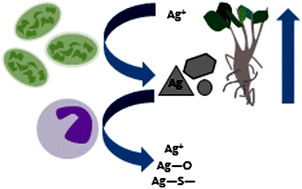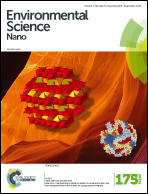Research highlights: speciation and transformations of silver released from Ag NPs in three species
Abstract
Antimicrobial silver nanoparticles used in consumer products may be released during fabrication, during product use, or after disposal and may reach terrestrial and aquatic ecosystems, prompting concern about their potential to adversely impact the environment (Benn and Westerhoff, Environ. Sci. Technol., 2008, 42, 4133, DOI: 10.1021/es7032718). Although the toxicity of pristine silver nanoparticles is well studied and understood, silver nanoparticles can undergo transformation during release and in engineered and natural environments. The speciation of silver after release must therefore be explored to deepen understanding of the potential impact of these nanoparticles on the environment. Herein, we highlight three articles which use highly sensitive analytical techniques to define, and in some cases map, silver speciation in situ after exposure to organisms of varying size and complexity. First, we highlight research by Leonardo et al. which explores the transformations of silver acted upon by a microalgae species that is a candidate for heavy metal remediation in water. Next, we highlight research by Stegemeier et al. quantifying and mapping the speciation of silver in alfalfa after exposure to several silver sources, including two silver-based nanoparticles. Finally, we discuss work by Wang et al. on silver speciation in human monocyte cells as observed by synchrotron radiation techniques which leads to mechanistic insights on cytotoxicity.


 Please wait while we load your content...
Please wait while we load your content...